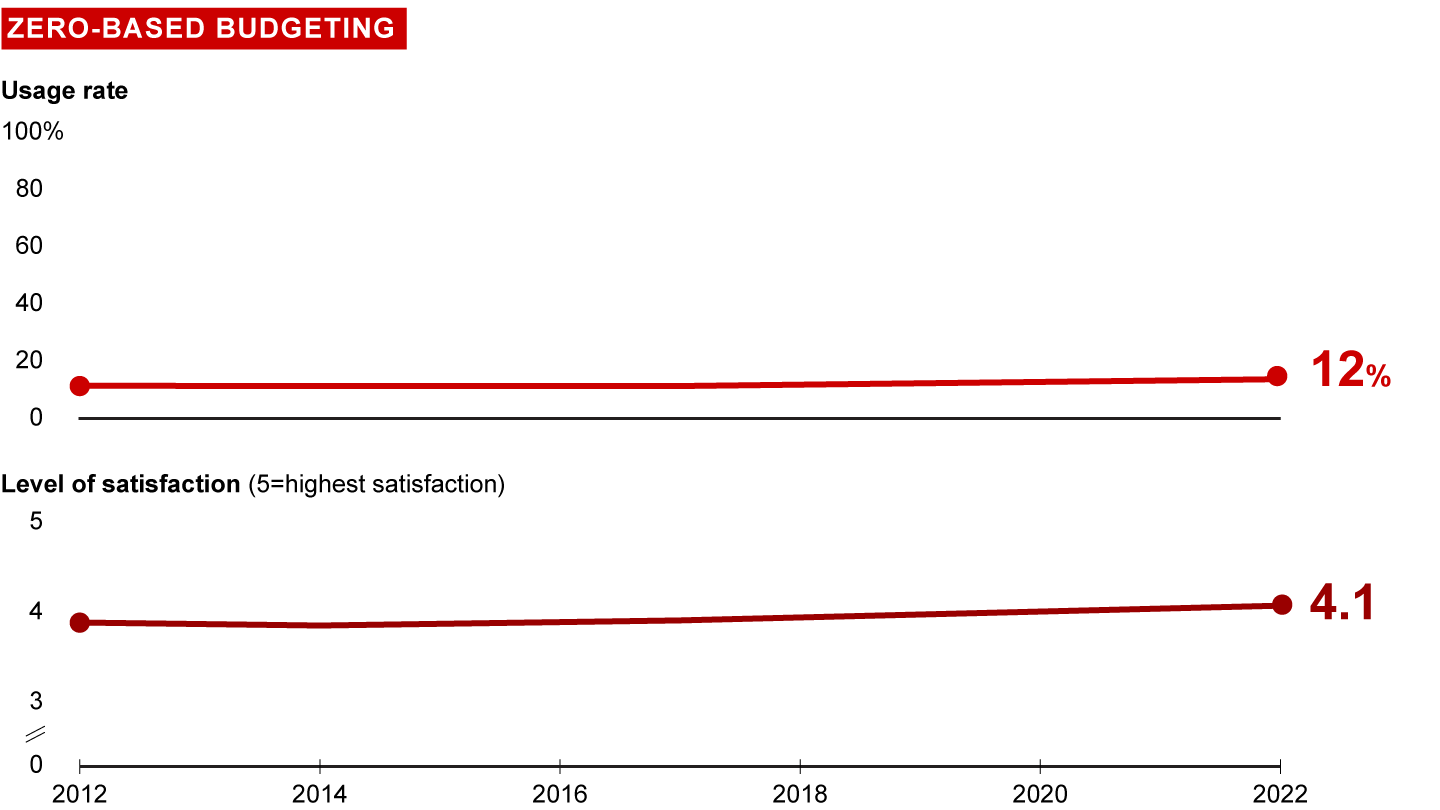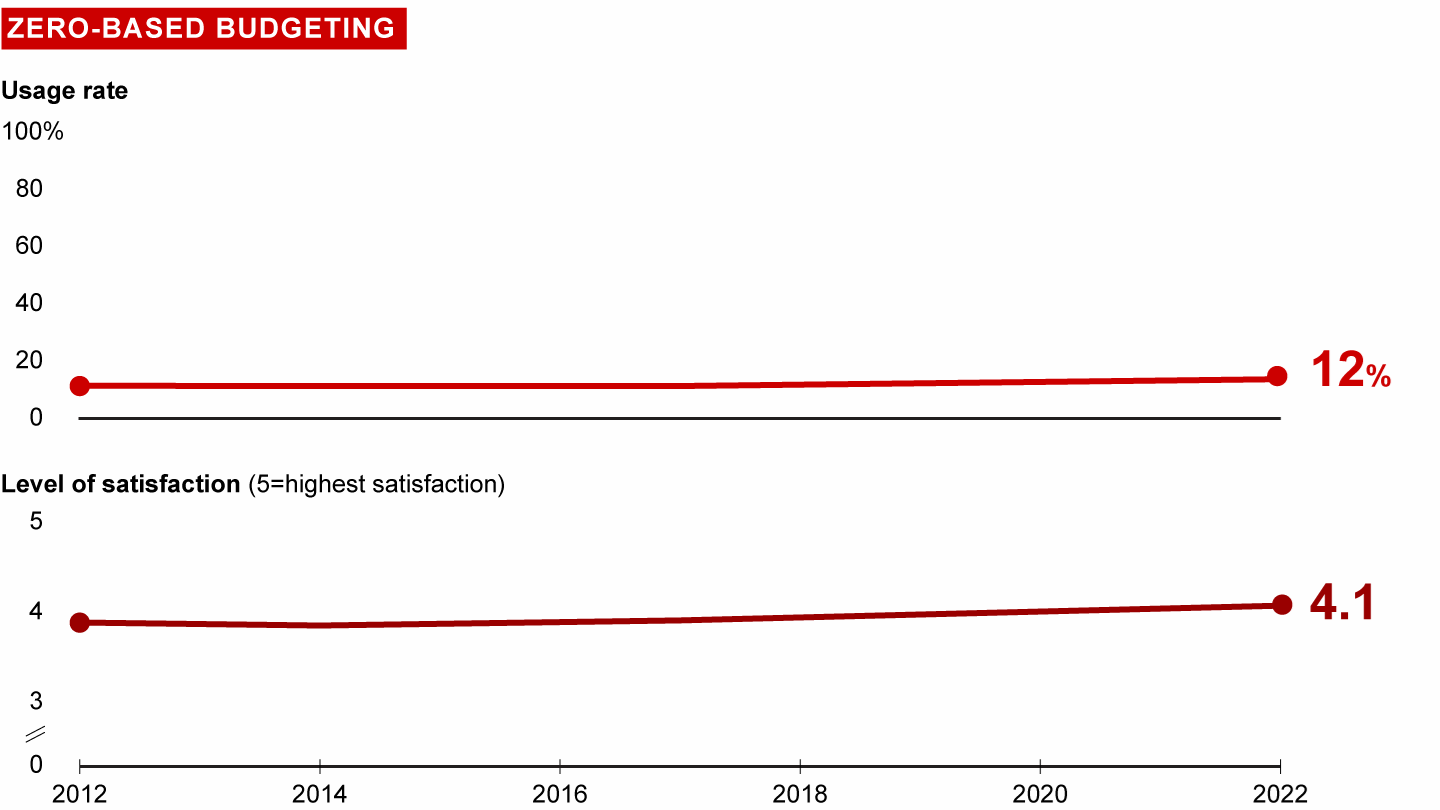Management Tools
What Is Zero-Based Budgeting?
Zero-based budgeting (ZBB) is a budgeting method that takes a “blank sheet of paper” approach to resource planning. The zero-based budget process differs from traditional budgeting by examining all expenses for each new period, not just by making incremental changes to prior-year budgets. It starts from a budget of zero, forcing managers to scrutinize all spending and requiring them to justify every expense item that should be kept. It helps companies to radically redesign their cost structures and boost competitiveness. The process is helpful for aligning resource allocations with strategic goals, although it can be time-consuming and difficult to quantify the returns on some expenditures, such as basic research.
Usage and satisfaction among survey respondents


Zero-based budgeting is an ongoing cost management capability focused on delivering continuous cost improvement. It reinforces an ownership culture in which associates treat each dollar as if it is their own. ZBB achieves results by improving visibility on expenses, increasing justification for budgeted spending, and enabling ongoing results discussions and reallocation initiatives.
How Is Zero-Based Budgeting Implemented?
For zero-based budgeting, companies should take the following steps:
- Reenvision the business, ask what activities and resources will truly be needed to compete under future market conditions, and then set a clear strategic vision and cost target.
- Build a comprehensive fact base of current expenses, cleanly mapped to the general ledger.
- Organize similar expenditures into standardized categories known as cost packages and subpackages.
- Develop price and consumption drivers for relevant subpackages.
- For each category, create a cost package owner who has joint ownership with profit-and-loss owners.
- Empower cost package owners to generate initiatives for their packages in collaboration with business units.
- Redesign the budgeting process to support detailed budgeting and value-added negotiations between package owners and budget owners.
- Set up real-time package-level cost tracking (actuals vs. budgets) with an executive review process.
- Enable the process through easy-to-use tools (e.g., budgeting tools, visibility tools, and tracking tools).
Related Topics
What Are the Common Uses for Zero-Based Budgeting?
Zero-based budgeting is used to:
- Align resources with the mission of the company and its operating units
- Fund key strategic imperatives while removing large non–value-adding costs
- Confront conventional thinking and resource allocations by challenging every line item and assumption, including the most protected of interests
- Promote transparency in financial decision making at all levels of the organization, allowing businesses to understand why they spend what they spend
- Increase the quality of investment decisions and fiscal policies

Management Tools & Trends 2023
On the 30th anniversary of our survey, managers seem surprisingly upbeat.